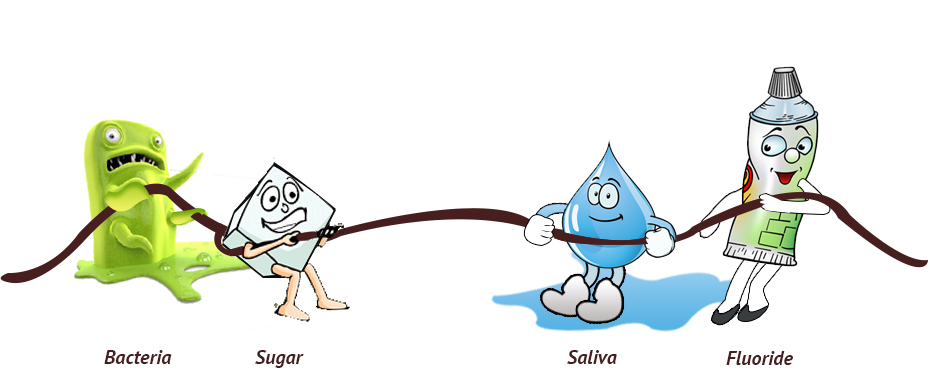Nowadays, even though numbers of advertising and dental awareness camps are organized by dentists or toothpaste companies or some dental health organizations, many people across the world don’t know even basic information about how to take dental care of their children. In overall good health of your child, teeth heath plays a major role. It is highly essential to keep your child’s teeth healthy for lifelong, you should care good oral health right from the birth. Take regular assistance of your Kids dentist to keep your child away from teeth pain.
In this blog, we are going to guide you some important information about the impact and effect of Fluoride and Sugar on your kid’s teeth health.
Fluoride
- Fluoride is an essential mineral and it has many positive effects on teeth health.
- It is a natural mineral which is found in water, some foods and soil. Fluoride is also available in gel, fluoride toothpastes, and mouth rinses.
- It is useful for tooth mineralization and provides resistance to tooth decay.
- It prevents formation of new cavities in teeth. It helps to reverse the effect of the primary stage tooth decay.
- It is derived from fluorine (the most common element of Earth’s outer layer) and available in the water naturally.
- It helps to keep teeth strong in kids and teenagers.
- People add fluoride in drinking water in many countries to protect teeth from the dental problems.
- If your water does not contain sufficient amount of fluoride, you should consult Children Dentistry Expert to take fluoride as an extra supplement.
- Fluoride is available in a supplement form such as drops, varnish and chewable gums or tablets. For children with the high risk of tooth decay, fluoride supplement may be recommended by a Kids dentist.
- Water fluoridation is a helpful and safe way to protect tooth decay.
Fluoride – Things to Consider
It is vital to monitor the amount of fluoride in water regularly. Some children swallow toothpaste during brushing that become harmful for them. It can increase chances of dental fluorosis. It is a cosmetic defect that appears on tooth as white specks. If any child swallows a large amount of toothpaste daily, there will be more chances of occurring brown enamel to him or her. Normally, it occurs in the places where the amount of fluoride level is high in the water.
Sugar
- Sugar plays a harmful role that not only cause tooth cavity, but feeds bacteria. Sugar is known as a source of energy for the bacteria.
- When the bacteria and saliva combines with sugar, it can cause the tooth decay.
- The bacteria use sugar that forms plaque. Using sugar, the bacteria grow quickly and it causes the development of plaque in thickness and size.
- Sugar helps bacteria to stick to the tooth surface that in turn get harder and makes impossible for saliva to cleanse.
- Sugary foods feed bacteria and generate acidic compound. It breaks teeth’s enamel coating and cause cavities.
- Chocolates, mints, candies, lollipops plays major role in form tooth decay as using sugar they continually coat the teeth.
Sugar – Things to Consider
When you eat sugar or sugary foods, it becomes less harmful, if you take it with a meal. Avoid eating sugary foods when you go to bed. It becomes more harmful at night because production of saliva is less during sleeping. Give your children fruit juices or sweets at mealtime to protect them from tooth cavity. Chew sugarless gum or rinse your mouth with mouthwash or water after eating. Take a break of at least three hours to eat sugary foods.
Dental diseases affect the functional ability of children that may affect their mental and physical growth. For healthy growth of children, right dental care is very essential. Visit Kids Dentist Melbourne for regular checkups to prevent your child from major teeth problems and be a responsible parent for your child’s healthy smile!!




